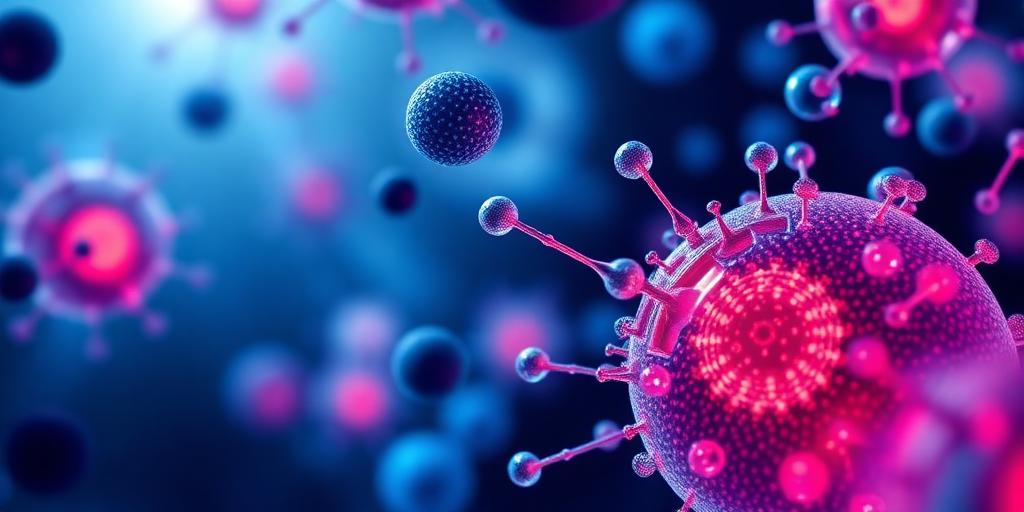The Role of Nanotechnology in Medicine by 2025 (India & World)
Nanotechnology, the manipulation of matter at the atomic and molecular scale, is rapidly transforming various sectors, and medicine is no exception. By 2025, its role is projected to be even more profound, offering innovative solutions to some of the most pressing healthcare challenges globally and in India.
What is Nanotechnology in Medicine?
Nanotechnology in medicine, often referred to as nanomedicine, involves using nanoscale materials and devices for diagnosis, treatment, and prevention of diseases. These applications range from drug delivery systems to regenerative medicine.
Current Applications of Nanotechnology in Medicine
- Drug Delivery: Nanoparticles can deliver drugs directly to cancer cells, reducing side effects and improving efficacy. In India, research institutions are exploring targeted drug delivery for diseases like tuberculosis.
- Diagnostics: Nanotechnology enables the development of highly sensitive diagnostic tools that can detect diseases at an early stage. Nanobiosensors are being used to identify biomarkers for various conditions.
- Regenerative Medicine: Nanomaterials provide scaffolds for tissue regeneration, aiding in the repair of damaged organs and tissues. This is particularly relevant in treating injuries and chronic diseases.
- Medical Imaging: Nanoparticles enhance the resolution of medical imaging techniques, allowing for better visualization of internal structures.
Projected Role by 2025
By 2025, nanotechnology is expected to play an even more significant role in medicine, driven by advancements in research and technology. Here are some projections:
1. Enhanced Drug Delivery Systems:
- Global: Nanoparticle-based drug delivery systems will become more sophisticated, enabling precise targeting and controlled release of medications. This will lead to improved treatment outcomes for diseases like cancer, diabetes, and cardiovascular disorders.
- India: With increasing investments in healthcare infrastructure and research, India is likely to see wider adoption of nanodrugs, particularly for prevalent diseases. Local pharmaceutical companies may collaborate with research institutions to develop cost-effective nanomedicines.
2. Advanced Diagnostic Tools:
- Global: Nanotechnology will facilitate the development of point-of-care diagnostic devices that can provide rapid and accurate results. This will revolutionize healthcare by enabling early diagnosis and timely intervention.
- India: Affordable and accessible diagnostic tools are crucial in India. Nanotechnology can drive the creation of portable and user-friendly diagnostic devices for rural healthcare settings.
3. Personalized Medicine:
- Global: Nanotechnology will contribute to the rise of personalized medicine by enabling the development of customized treatments based on an individual’s genetic makeup and disease profile.
- India: With its diverse population, India stands to benefit greatly from personalized medicine. Nanotechnology can help tailor treatments to specific genetic profiles, improving treatment outcomes and reducing adverse effects.
4. Regenerative Therapies:
- Global: Nanomaterials will play a key role in regenerative medicine, offering innovative solutions for tissue engineering and organ repair. This will have a significant impact on treating chronic diseases and injuries.
- India: The demand for regenerative therapies is high in India, given the burden of chronic diseases. Nanotechnology can drive the development of cost-effective regenerative therapies, such as bone and cartilage regeneration.
5. Nano-Robotics:
- Global: While still in its early stages, nano-robotics holds immense potential for targeted drug delivery, microsurgery, and disease monitoring. By 2025, we may see initial applications of nano-robots in clinical settings.
- India: Research in nano-robotics is gaining momentum in India. Collaboration between research institutions and industry players can accelerate the development of nano-robotic devices for specific medical applications.
Challenges and Opportunities
Despite its immense potential, nanotechnology faces several challenges:
- Toxicity: Ensuring the safety of nanomaterials is crucial. Research is needed to understand their long-term effects on human health and the environment.
- Regulatory Framework: Clear regulatory guidelines are needed to govern the development and use of nanomedicines.
- Cost: The high cost of nanotechnology-based products can limit their accessibility. Efforts are needed to reduce costs and make them affordable.
However, the opportunities are vast:
- Collaboration: Collaboration between academia, industry, and government can accelerate the development and adoption of nanomedicines.
- Investment: Increased investment in research and development is crucial to drive innovation.
- Education: Training healthcare professionals in the use of nanotechnology is essential for its successful implementation.
Conclusion
By 2025, nanotechnology is poised to revolutionize medicine, offering innovative solutions for diagnosis, treatment, and prevention of diseases. While challenges remain, the potential benefits are immense. India, with its growing healthcare sector and research capabilities, can play a significant role in shaping the future of nanomedicine. Embracing nanotechnology can lead to improved healthcare outcomes and a better quality of life for millions worldwide.
